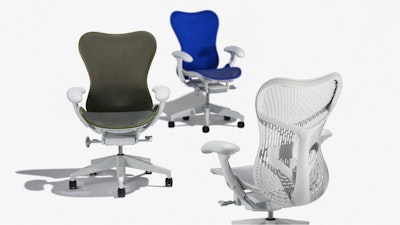Materials
Use sustainable, 100% bio-based or recycled materials by 2050
Recycled content
We are enhancing our textile offer by increasing its average amount of recycled content.
Ethical sources
We are dedicated to sourcing sustainable and ethically produced materials.
Eliminating added PFAS
We are committed to using safe chemistry across our product offer, prioritising the health and wellbeing of our customers and the environment.
More sustainability goals
Sourcing better materials is an important sustainability goal for MillerKnoll, but it’s not our only one.

Carbon
We strive to design the lowest carbon footprint products and commit to achieving net-zero carbon emissions by 2050.

Circularity
We aim to design timeless, durable products with zero waste by 2050.

Planet
We strive to design and make the world’s best products in the most sustainable way – which includes net-zero carbon emissions by 2050.